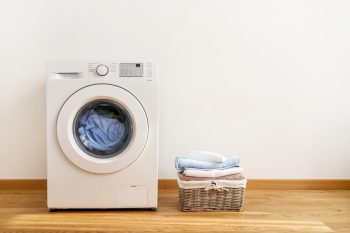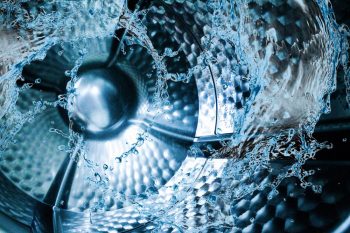
When it comes to cleaning dishes, the dishwasher is a handy appliance that saves time and effort. But for many, drying dishes in the dishwasher often comes with challenges, from excess moisture to water spots. In this comprehensive guide, we will delve into the best methods for drying dishes in the dishwasher, various drying technologies, energy efficiency, and safety considerations.
To dry dishes in the dishwasher, use the heat-dry setting if available. This works by heating the air inside the dishwasher, turning water into steam, and forcing it out through a vent. For better results, use a rinse aid and ensure there’s space between dishes for air circulation. Once the cycle ends, slightly open the dishwasher door to allow the remaining steam to escape. Alternatively, use energy-efficient drying methods such as condensation drying or air-dry features.
Different Methods of Drying Dishes in the Dishwasher
Dishwashers employ several methods to dry dishes, and different models may use one or a combination of these techniques:
- Evaporation: Some dishwashers use a mechanical arm to open the door after the wash cycle, allowing trapped moisture to escape.
- Electric heating element: This method uses a heating element at the bottom of the dishwasher to heat the air and evaporate moisture off the dishes.
- Heated air dry: This system combines a heating element with a fan to heat the air and ensure even distribution across all the dishes.
- Condensation drying: This method uses the physics of condensation to pull moisture off dishes.
- Fan-assisted dry: This method adds air circulation to the condensation drying process to help speed up the drying.
- Ventilation drying: After the drying cycle, the dishwasher door opens slightly, allowing the last bits of moisture to evaporate.
- Zeolite drying: This energy-efficient method is exclusive to Bosch and Siemens dishwashers with a C energy label or higher. It uses zeolite, a mineral that produces heat when exposed to moisture, to dry the dishes without relying on electricity.
How the Heat Dry Setting Works in a Dishwasher
The heat dry setting in a dishwasher works by forcing hot air through the machine, turning water into steam, and then forcing the steam out of the dishwasher through a vent. This process involves the activation of electric heating elements inside the dishwasher, which create intensely heated air.
Benefits of Using a Dishwasher’s Drying Function
- Convenience: The drying cycle spares you the chore of hand-drying dishes before putting them away.
- Spotless dishes: Heat drying rapidly removes moisture, eliminating the hazy or spotty film on glassware.
- Improved hygiene: Heat drying is considered more sanitary than hand-drying with dishtowels, which can harbor germs and bacteria.
- Energy efficiency: Some dishwashers use condensation drying, which is more energy-efficient, hygienic, and safe for your dishes and machine than traditional heat drying.
- Faster drying: If you need your dishes dried quickly, the heat-dry cycle is an effective option.
How to Enhance the Efficiency of the Dishwasher’s Drying Process
To enhance the efficiency of your dishwasher’s drying process, follow these tips: * Allow space between dishes * Use a rinse aid * Use the heat feature * Open the dishwasher door a few inches as soon as the cycle ends * Use appropriate drying options * Unload the lower rack first
Energy-Efficient Settings to Use on a Dishwasher
To use your dishwasher in an energy-efficient manner, consider the following settings and tips: * Use the eco mode or energy-saving mode * Load the dishwasher fully * Skip pre-rinsing * Lower the water heater temperature * Use air-dry or no-heat air-dry features * Choose the right program * Run the dishwasher during off-peak hours * Maintain your dishwasher
By following these tips, you can optimize your dishwasher’s energy efficiency and save on utility bills.
Downsides to Using a Dishwasher’s Drying Function
There are several downsides to using a dishwasher’s drying function, including increased energy consumption, potential damage to dishes, shortened appliance lifespan, inefficient drying, and environmental impact. These can be minimized by using the air-dry setting or allowing dishes to air dry.
Conclusion
Drying dishes in the dishwasher can be an efficient and convenient process if done correctly. By understanding the different drying methods, using energy-efficient settings, and following best practices, you can ensure that your dishes come out of the dishwasher spotless and dry. Remember, the key to effective drying is proper loading, using a rinse aid, and allowing enough space for air circulation. Happy dishwashing!
Frequently Asked Questions
What is rinse aid and how does it enhance the drying process?
Rinse aid is a liquid you add to the rinse-aid compartment of your dishwasher. It helps to reduce surface tension on your dishes during the rinse cycle, thus allowing water to slide off your dishes easily, preventing droplets from forming. This results in faster and more efficient drying.
Why should I unload the lower rack of the dishwasher first?
Unloading the lower rack first is a good practice because any residual water droplets on dishes in the upper rack won’t spill onto the dry dishes in the lower rack.
What does running the dishwasher during off-peak hours mean?
Off-peak hours refer to the time of day when energy demand is lowest. Running your dishwasher during these hours can save on energy costs, as utility companies often charge less for electricity used during off-peak times.
How can I maintain my dishwasher to ensure its efficiency?
Dishwasher maintenance includes regular cleaning of the filter, spray arms, and door seals. Also, inspect and clean the dishwasher drain regularly to prevent clogs. Using the right amount of detergent and rinse aid can also keep your dishwasher running efficiently.
What is eco mode on a dishwasher?
Eco mode is a setting on many dishwashers designed to reduce energy and water consumption. It usually involves a longer wash cycle at a lower temperature, making it more energy-efficient but less time-efficient.












